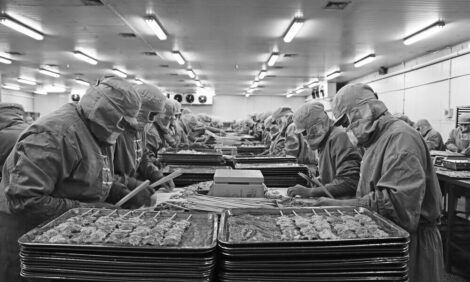



Attraction of Renewable Options for Farming Community
ANALYSIS - The major drivers for the farming community to adopt a variety of renewable fuels will be the high and rising oil process and the problems of food security, writes ThePoultrySite Editor in Chief Chris Harris.At present, world oil priices are standing at around $120 a barrel but in the recent past they have risen to nearly $150 a barrel.
However, while consumers and farming communities alike are facing increasing fuel price pressure, they are also being confronted with concerns over climate change and rising greenhouse gas emissions.
And farming communities are also facing up to changing governments and changing policies demanding new carbon emission initiatives, greater food output and greater sustainability in production.
In the UK recently, the government has been facing a battle over the payment of feed in tariffs for photovoltaic solar power onto the national grid. The government has called for a reduction in the tariffs and the argument is set to run through to the highest courts.
However, at the same time the government is pressing for increasing amounts of renewable energy to be adopted.
Speaking at the recent Energy Now conference and exhibition in the UK, Dr Jonathan Scurlock, chief advisor to the National Farmers' Union on renewable energy, said that in recent times in the UK there has been a turnaround in the take up of renewable energy in the country.
"Photovoltaic has come from nowhere and anaerobic digestion, wind and small scale hydro all have a place," Dr Scurlock said.
This surge of interest in renewable fuels coincides with a rise in concerns over the extremes of climate that are being experience. Cold winters that have been seen in the UK have been produced by the warming of the Arctic regions and the UK has also started to experience floods and then droughts.
This week in the UK an emergency meeting is taking place because of the potential drought situation particularly in the East and South East of the country. Meanwhile, the North West of the country is experiencing above average rainfall. This together with volatile food and oil prices will determine the degree that renewable energy is seen as a viable alternative in the years to come.
Food production and security have come back into the political arena because of the concerns about how the world will feed an increasing population coming up to 2050.
DR Scurlock added that another dominating factor in the volatility of food and food security is the fact that grain prices are determined in Chicago so that domestic markets have little control over their own market.
He said that the UK government chief scientist John Beddington had said that "a perfect storm is approaching".
However, he added that the UK had the advantage that its farming sector can diversify and it can export.
Many of the difficulties faced over climate change and the "carbonisation" of the economy are produced by the way countries use energy and Dr Scurlock said that the private sector as well as governments can have an input in reducing the carbon input of production.
The farm sector can also have an effect by diversifying the on-farm inputs.
"If you can reduce the carbon footprint of a farm operation, the retailers will reward you for it," he said.
He said the farming sector should be looking to a dual purpose use for land - both as farming land for food production and for renewables and he predicted that renewable energy could soon overtake tourism as farming's second source of income.
However, there is a need for a sustainable system of grants and assistance to advance the renewable sector and there is a growing range of incentives despite the appearance that the opposite is the case as seen in some government policies.
In the UK, at present about 20 per cent of farms are producing renewable energy and one in six have photovoltaic systems. More and more renewable energy is being used as a way of becoming more sustainable n farm and not necessarily and an extra revenue stream.
More dairy units are using solar energy to heat water for parlour wash down and they are using heat exchangers to cool the milk.
With different incentives other than feed in tariffs, such as those contained in the Renewables Obligation Certificates and the incentives produced by demonstrating to processors and retailers that food is being produced under systems that control their carbon footprint, more farms and farmers will be embracing a new and attractive diversification in their production systems.








